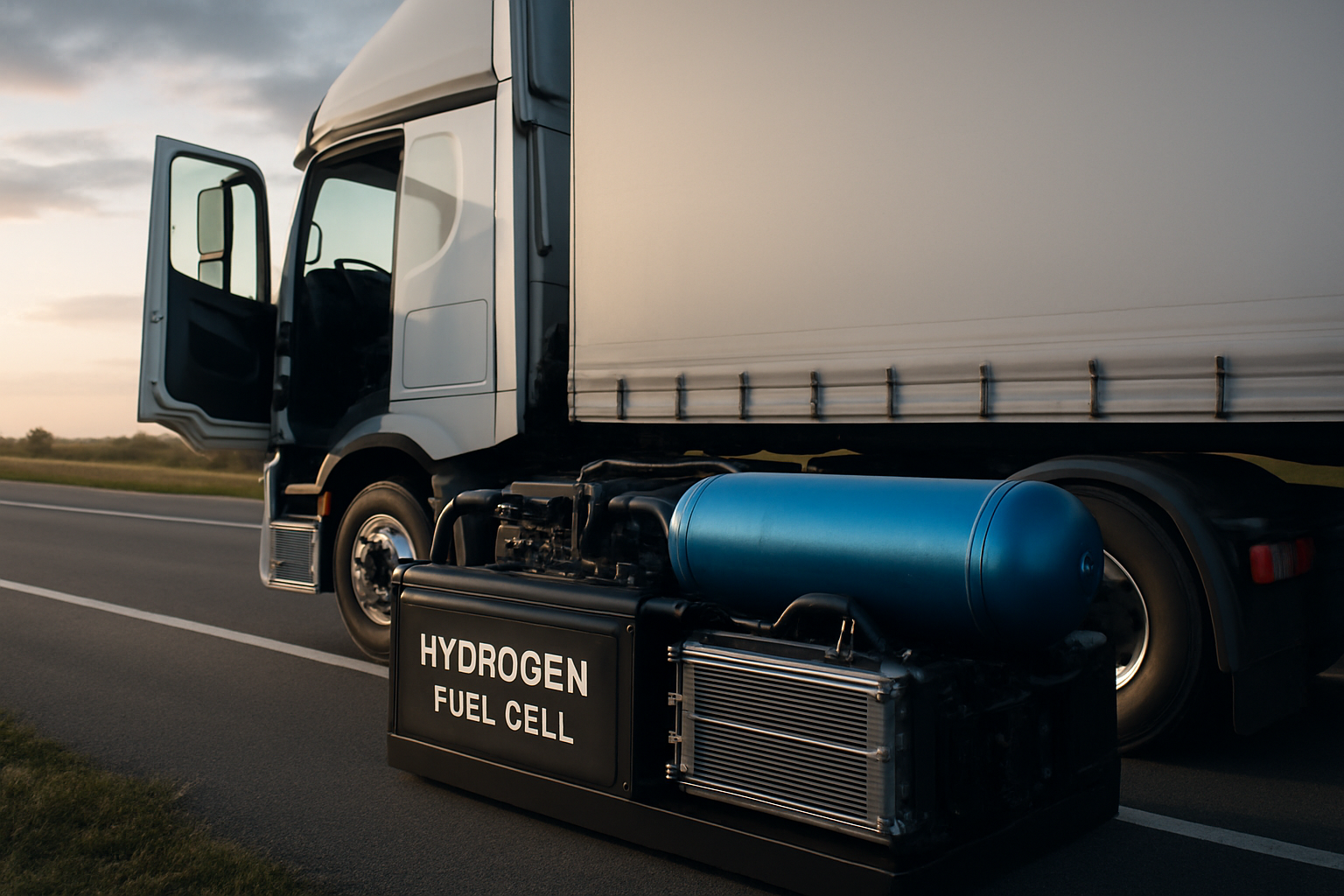Hydrogen Fuel Cells: The Quiet Revolution in Heavy-Duty Transportation
Picture a world where massive semi-trucks glide silently down highways, emitting nothing but water vapor. This isn't science fiction – it's the promise of hydrogen fuel cell technology in heavy-duty transportation. As the automotive industry grapples with environmental concerns, hydrogen fuel cells are emerging as a game-changer for long-haul trucking, offering a potent combination of zero emissions, long range, and quick refueling times. Let's dive into the world of hydrogen-powered trucks and explore how this technology is reshaping the future of freight transport.

How Hydrogen Fuel Cells Work in Trucks
At the heart of a hydrogen fuel cell truck is a stack of fuel cells that convert hydrogen into electricity. The process is elegantly simple: hydrogen from the tank combines with oxygen from the air in the fuel cell stack, producing electricity to power the truck’s electric motors. The only byproduct of this reaction is water vapor, making it a zero-emission propulsion system. The electricity generated can either directly power the motors or be stored in a small battery for later use, providing an extra boost when needed.
Infrastructure: The Key to Hydrogen’s Success
One of the biggest challenges facing hydrogen fuel cell adoption in trucking is the lack of refueling infrastructure. However, this is rapidly changing. Governments and private companies are investing heavily in hydrogen refueling stations along major trucking routes. The goal is to create hydrogen corridors that enable long-distance travel for fuel cell trucks. These stations are designed to deliver hydrogen at high pressures, allowing for fast refueling times comparable to diesel trucks – a critical factor for time-sensitive logistics operations.
Real-World Performance and Pilot Programs
Several major truck manufacturers have launched pilot programs to test hydrogen fuel cell trucks in real-world conditions. These programs have shown promising results, with trucks demonstrating ranges of up to 600 miles on a single tank of hydrogen. Drivers report that the trucks offer smooth, quiet operation and strong torque characteristics, making them well-suited for hauling heavy loads. Maintenance requirements are also reduced compared to traditional diesel engines, as fuel cells have fewer moving parts and don’t require oil changes.
Economic and Environmental Implications
The shift to hydrogen fuel cell trucks could have far-reaching economic and environmental impacts. While the initial cost of fuel cell trucks is currently higher than diesel alternatives, the total cost of ownership is expected to decrease as production scales up and hydrogen infrastructure expands. From an environmental perspective, the potential for zero-emission long-haul trucking is enormous. The transportation sector is a significant contributor to greenhouse gas emissions, and decarbonizing heavy-duty vehicles could play a crucial role in meeting climate goals.
Challenges and Future Developments
Despite the promise of hydrogen fuel cells in trucking, challenges remain. The production of green hydrogen – made using renewable energy – needs to be scaled up to truly realize the environmental benefits. Additionally, further improvements in fuel cell durability and cold-weather performance are needed to meet the demanding requirements of the trucking industry. However, ongoing research and development efforts are addressing these challenges, with new breakthroughs constantly pushing the technology forward.
A Hydrogen-Powered Road Ahead
As we look to the future of heavy-duty transportation, hydrogen fuel cells are poised to play a significant role. The technology offers a compelling solution for long-haul trucking, combining zero emissions with the range and flexibility that the industry demands. While challenges remain, the rapid progress in fuel cell technology and infrastructure development suggests that hydrogen-powered trucks could become a common sight on our highways sooner than we think. As this quiet revolution unfolds, it has the potential to transform not just the trucking industry, but the entire landscape of goods transportation, paving the way for a cleaner, more sustainable future.





